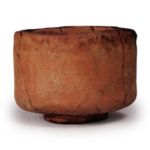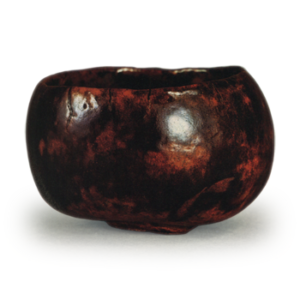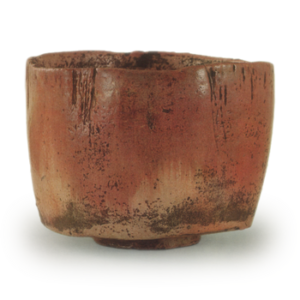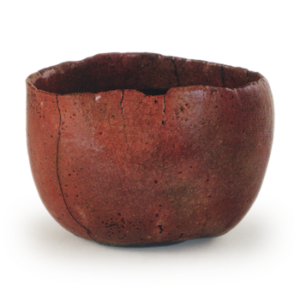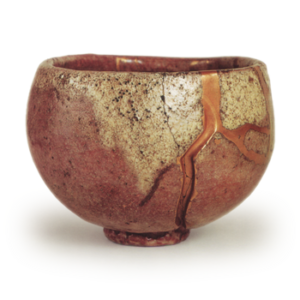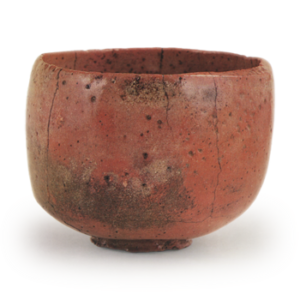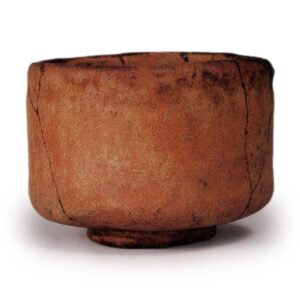
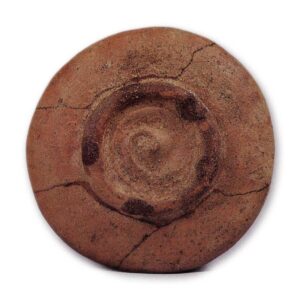
Height 8.0cm, mouth diameter 9.5cm, base diameter 5.4cm
The inscription on the front of the lid of the inner box reads “Tsu, Hami Kaki, Left (Hanashii)” and the inscription on the back of the box reads “Choujirou Aka Chawan (red tea bowl) Name: Tsu, Hami Kaki, This is called Kimori, Kimori niaraasu. The inner and outer boxes are inscribed by the brothers Jyoshinsai and Itto. It is interesting to note that Haraso, when presented with this tea bowl, suggested that it might be a “kizumori,” and that if so, what kind of inscription should be given to it, and how he named it “tsutsumi kaki” (persimmon), is expressed in the kyoka. The origin of this pottery is not known before Goto Muneyoshi under Kakugasai, and it was later passed down to Hyogoya Seijiro, Seto Kurozaemon, Mitsui Saburosuke, Tsuda Kyuhei, and the Fujita family.
The clay flavor, glazed surface, and the shape of the base are the same as those of “Ichimonji,” “Muichimono,” and “Shirasagi,” but the shape of the vessel is a semi-tubular form with a sharply curved waist that tapers slightly toward the mouth, and the base is rather large and low with a rounded finish like “Muichimono. The height is slightly lower than that of the “Muichimono” and is rounded in shape, as is the case with the “Muichimono”. The inside of the base is carved with a curled spiral helmet with five eye marks clearly visible. There are also five eye marks on the omemaeki and some tea stains. The eye marks are not due to the fact that the piece was fired in an iriko style, but were probably placed with the eye marks of Korai tea bowls and the like in mind. The glaze is thin, and the appearance of Jyuraku clay can be clearly seen.

